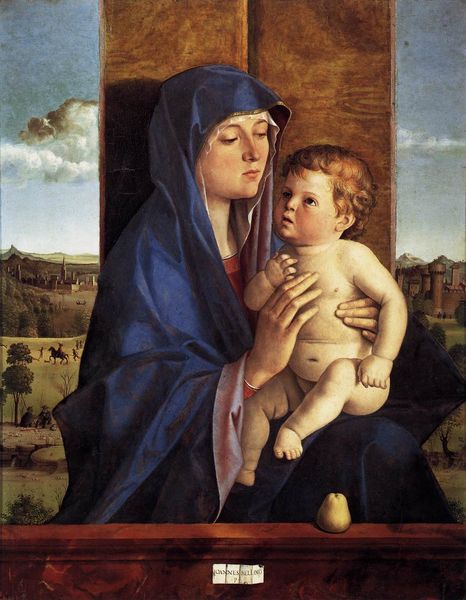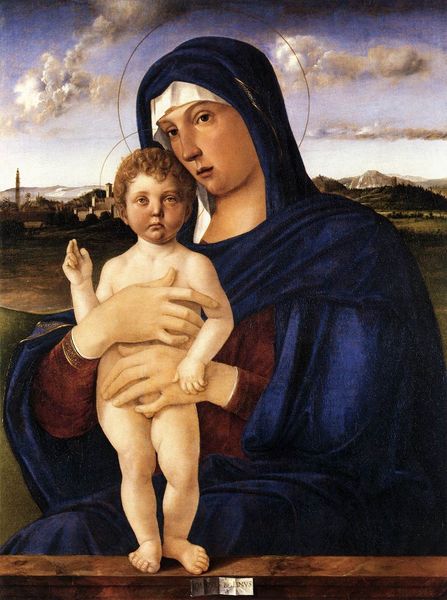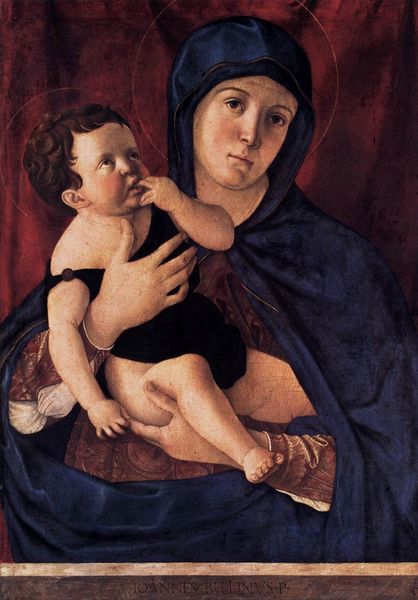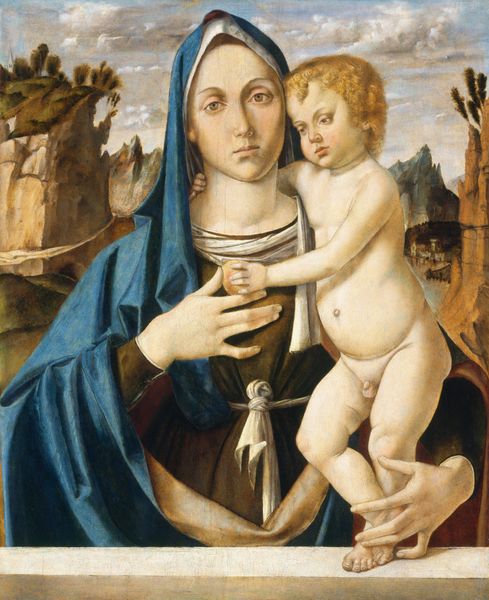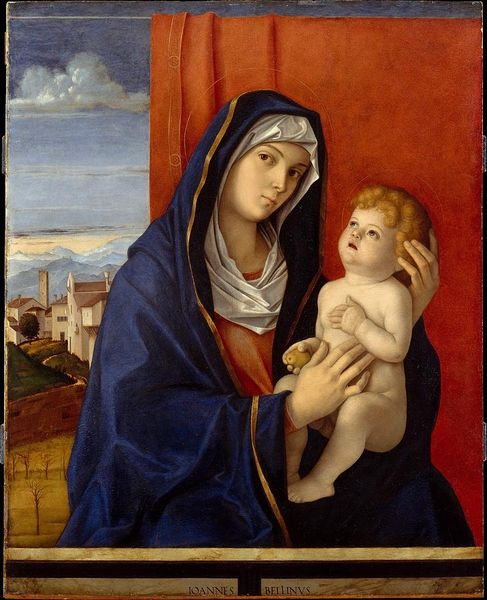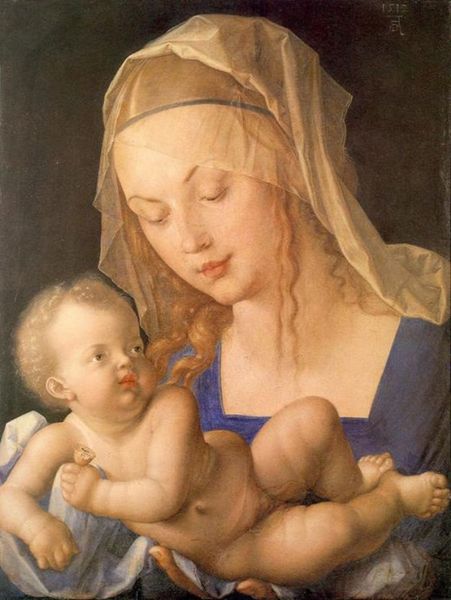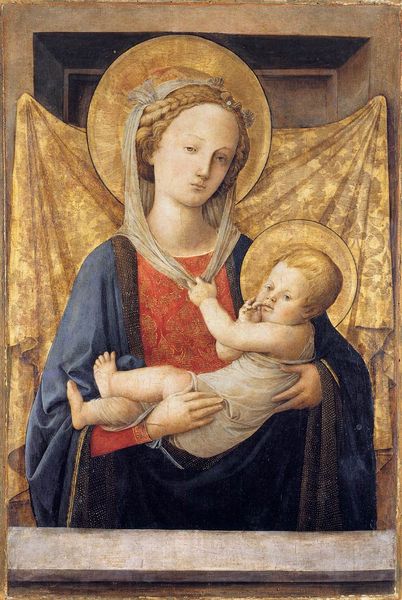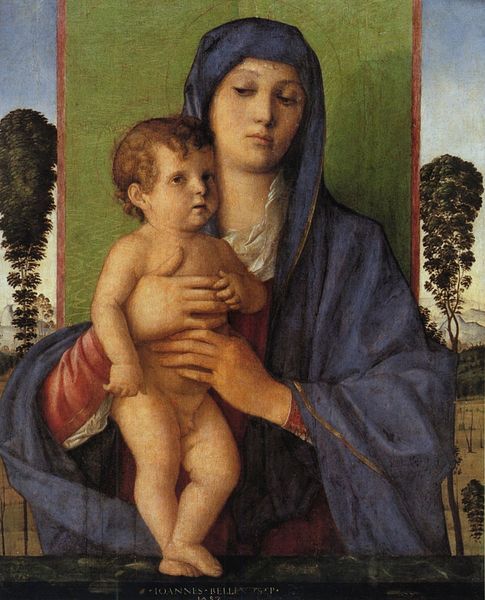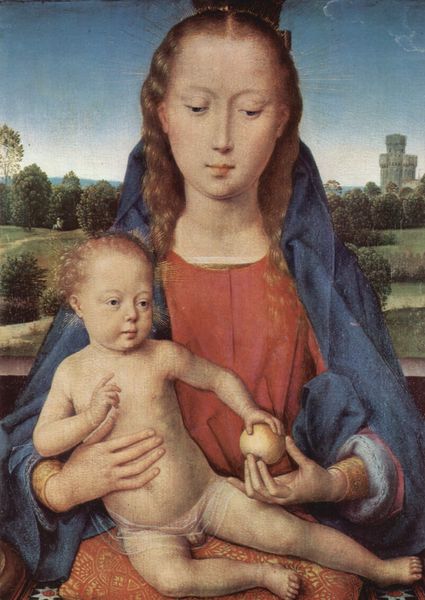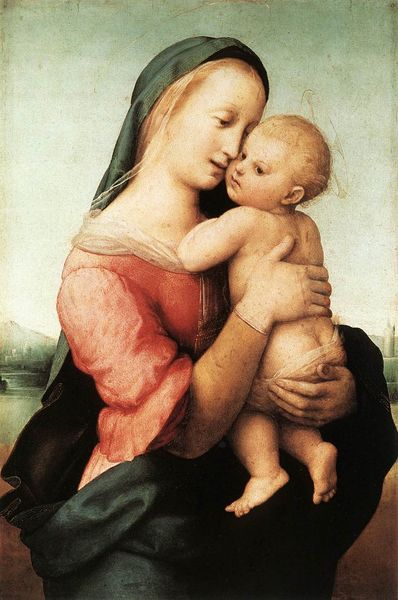
painting, oil-paint
#
portrait
#
narrative-art
#
painting
#
oil-paint
#
figuration
#
11_renaissance
#
history-painting
#
northern-renaissance
#
academic-art
Dimensions: 40 x 50 cm
Copyright: Public domain
Curator: Alright, let's turn our attention to this compelling piece, “Madonna and Child,” also known as the “Haller Madonna,” painted by Albrecht Dürer around 1498. You'll find it here in the Museo del Prado. Editor: It strikes me immediately by its stillness. The Madonna’s gaze is so direct, so…unyielding. There's a seriousness here that is quite different from, say, some of the Italian Renaissance depictions. Curator: Dürer, of course, being a master of the Northern Renaissance, approaches the subject with a different sensibility. It’s painted in oil on panel, allowing for remarkable detail, and intended as a private devotional image. But it's impossible to ignore its place within the broader religious and socio-political shifts of the period. Editor: Precisely! Look at how the Madonna is framed - one side of the painting offers a window onto a bright pastoral scene, while the other looms a shadowy, stark architecture. We might think of these dichotomies, as reflecting societal expectations that frame the Virgin Mary between natural, exterior womanhood and the darker, private interiors. And Dürer seems highly aware. Curator: Absolutely. The controlled lines, the almost photographic rendering of the fabrics, combined with symbolic elements like the landscape viewed through the window all point towards Dürer's complex visual language and the intersection of the sacred and worldly. The inclusion of the Haller family coat of arms on either side is also no accident; a direct link to the patrons shaping both the production and reception of this art. Editor: What I find most striking is how Durer subverts conventional gender dynamics here. While ostensibly a traditional Madonna and Child, there's something powerfully subversive in her demeanor. Curator: It's the direct gaze, isn't it? It doesn’t invite piety as much as it commands respect, maybe even…acknowledgment of her agency. The Northern Renaissance had different ways of portraying its women that is more human, I’d say. Editor: Yes, this is a woman very aware of her position, her power, maybe even her burdens. It really resonates with contemporary feminist readings of motherhood and representation. Curator: It gives you much to ponder even five centuries after it was made. Editor: Exactly. It reveals so much when we start thinking about how these representations participated in shaping the visual narratives that dominate culture.
Comments
No comments
Be the first to comment and join the conversation on the ultimate creative platform.
